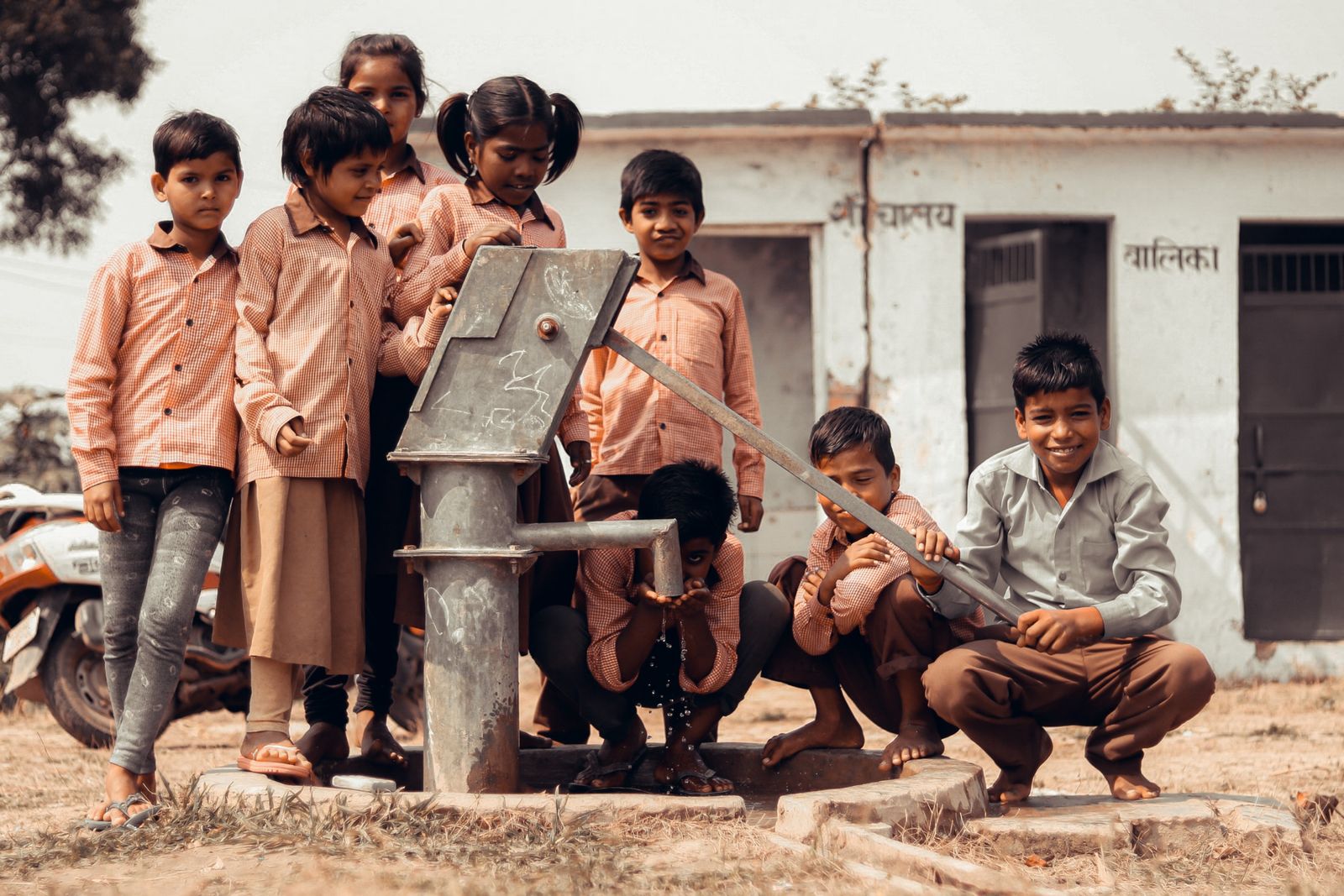From the Alma-Ata conference to the Sustainable Development Goals, nations have repeatedly agreed that everyone should receive quality healthcare and preventative support. However, turning resolutions and goals into reality has often been a near-insurmountable challenge. With limited resources often dependent on contributions and the need to coordinate with many stakeholders around the world, complex global health programs often struggle to launch. However, utilizing the launching of a program to measure its success undermines the true goal of improving and extending lives around the world. It is easy enough to launch a program or stand in front of a picture of supplies. However, a recent hurricane found thousands of tons of undistributed resources being stored on a runway in Puerto Rico because officials could not figure out how to distribute them. Hospitals during COVID found themselves expanding beds while their limiting factor was staff. In both these cases, inefficacy resulted from overstating the importance of an initiative’s flagship element, beds or water, while ignoring supporting elements like distribution.
Unfortunately, officials can often mask this gap by simply measuring the deployment of the initiative’s flagship and not its effects. These masking efforts are a disservice to both the global community that pays for these initiatives and those supposed to receive these services. Reducing disease to protect quality of life becomes more important as people around the world expect to live longer. Considering not just years-lived but also the quality of those years, assessing disability-adjusted life years (DALYs) will be critical to reducing burdens on healthcare systems and social services. However, the only way to accurately analyze the success of initiatives and know which ones are worth replicating, or what may need adjusting, is through proper analysis of their pilots, first adopters, peer programs, and non-participants.
While these issues exist wherever decision-making, execution, and finance are highly separated—as in most democracies with a separation of powers—they are especially pronounced in healthcare-related projects. Empirically evaluating a project can be quite difficult, for the analysis may be plagued by failings of methodology and conflicting priorities affecting what is measured, compounded when large datasets are not as readily available. While high-income nations may be largely unaffected by the “simple” diseases targeted by these programs, serious diarrheal diseases continue to be a leading cause of death in low and low-middle Sustainable Development Index (SDI) countries and rank third and second in cause of DALY-loss, respectively. When widespread diseases have such broad causes, it is critical to examine cost-effective and scalable solutions, requiring proper efficacy measurement and a full view of the supporting features needed for any program.
The Topline Isn’t Everything
Globally, in 2016 a billion people practiced open defecation and about half as many lack clean drinking water. Therefore, waste and drinking water often cross over in unsanitary ways, resulting in the biological contamination of drinking water, including that of the vulnerable and for baby formula.
It does not have to be this way. India, the world’s largest democracy and a country experiencing significant economic growth and social change, has attempted to make progress on this issue through PM Narendra Modi’s Swachh Bharat (Clean India) project, launched in 2014. However, fumbled deployment and an extreme focus on the topline metric of toilets, compounded by misdirected social campaigns, have undermined the program’s overall efficacy.
Due to varying degrees of program uptake with religion, rurality, and culture contributing to different usage patterns among regions—there is the opportunity to see comparisons within differing environments. Notably, those houses who did fully participate, despite the deployment issues, saved an average of US$779 per household. India has shown that, when they are adopted, non-pharmaceutical interventions (NPIs) can effectively combat these diseases, which is important because NPIs prove cost-effective. Comparatively, many clinical prevention programs do not save money at all.
Nevertheless, research has shown that, on a societal level, the program was ineffective; one study flat-out concluded that it did not improve health. Many people did not use the toilets due to poor maintenance or information. Maintenance and public relations to encourage actual use were main struggles of the Clean India campaign. In fact, Clean India, nationally, had limited priorities other than building the toilets and hailing celebrities who were part of their campaign, together comprising a top-down, blame-driven drive to convince people to use the toilets. Modi’s project focused primarily on installing as many toilets as possible, and he rushed to declare victory when the program reached “100 percent coverage” of installation, with Mahatma Gandhi's 150th birthday as a deadline.
One specific issue with the program was that only the lowest caste had the job to clean latrines and sewers as higher castes may consider it untouchable. Thanks to a number of factors such as residential segregation by caste and dependence on manual “scavenging” services, often the latrines are filthy. Thus, some individuals' belief that using the toilets is more risky than open defecation seems justified, and the futility of filthy toilets in promoting a “clean” India grows evident as the bathrooms become a genuine source of infection.
Even some reports doing the pre-work for vaccine development and other more complex interventions recognize that some tools like sanitation and basic hygiene do not require much knowledge of the hard science behind the disease. Overall, health planners believe that the first steps in health responses are often non-pharmaceutical interventions. However, even though preventative steps do not require an MD, they do still require skill, including communications and outreach, to deploy properly.
Unfortunately, defining success by implementation, as opposed to efficacy, can undermine disease prevention programs. While the measured goal of 100 percent coverage is impressive in its scale, this metric of success disregards the fact that many of the toilets were unusable. In addition, the program did not address residents opting not to use the toilets; usage was not a factor in the program’s success metrics, and residents’ concerns were therefore irrelevant. However, these concerns are relevant to stopping disease. Diarrhea does not care how many toilets you build; it cares how much waste is kept out of drinking water. Unused toilets do not help anyone, and unmaintained bathrooms often just exacerbate disease.
Accompaniment Matters
Another highly contagious disease, tuberculosis (TB), has caused unique challenges in other low-SDI countries. Despite significant global attention and deployment of tests, between four and 38 percent of TB-positive patients in Africa, Asia, and the Western Pacific do not start treatment. In Ghana, 87 percent of treated patients were effectively cured, but this rate drops to 54 percent when including all diagnosed. This drop in cure rate is primarily caused by poor tracking of diagnosed patients, which wastes significant efforts to identify and screen patients and allows known TB cases to spread. Meanwhile, medical companies and governments take pride in meeting the WHO 85% benchmark among treated patients, masking the low treatment rate among patients diagnosed with TB. In other words, such programs are effective at curing patients treated but not at ensuring that all diagnosed patients receive this treatment.
Competent program evaluation and thorough execution are important to make these initiatives more than vapid words. Program leaders are concerned about the price of new drugs to treat complex TB. However, when they are not providing first-line treatments because they do not know where the patients are, it becomes clear that a lack of drugs is not the only cause of program inefficacy. Albeit aware, program leaders often ignore the fact that these untracked patients are probably spreading the disease, which undermines the long-run efficacy of more basic treatments by allowing the disease to progress to more drug resistant states in poorly treated populations.
Confronting this dilemma, Partners in Health has long pioneered a successful accompaniment model, assigning trained lay workers to each patient in treatment to ensure a deep reach within the community even when formal health services are far away. Through this system, patients have a nearby contact representing the healthcare system with which they rarely interact directly. Lay workers diligently follow up with each patient and provide social support, successfully keeping patients on track with their medications, intervening early in complications, and identifying socioeconomic issues that may diminish the effectiveness of treatment. These measures reach treatment rates far ahead of those without social support.
The late Dr. Paul Farmer, a co-founder of Partners in Health, described their model as “sticking with a task until it’s deemed completed by the person or person being accompanied, rather than by the accompagnateur [health worker].” This patient-centered model of ensuring that the help is not just given but accepted and implemented truly contributes to the health of the patient. This approach could prove informative for other global health programs. Even Ghana now uses a similar model through their TB Champions.
Conclusion
Often when small, community-based programs are scaled up by governments or larger NGOs, adapting to different contexts is difficult. Advertising and education is critical. Dispelling the myths around toilet usage and actually following up with those who test positive for TB to ensure they receive treatment are both vital. Local involvement and outreach can ensure that health programs reach their full potential beyond surface level goals. Unfortunately, given the overall difficulty of scaling, many programs are still extremely expensive but have far less effectiveness than more involved pilot programs with grassroots support structures.
Research has shown that “individuals cannot be extracted from their social, political, and/or environmental context” and that social and non-coercive government tools must be used more aggressively to support medical and infrastructure interventions, a tactic that has worked in South Africa and regions in India. Leaders of health programs around the globe, unfortunately, continue to utilize metrics for success that are simply markers of program deployment and do not actually measure programs’ true success: their impact on communities. Until this approach changes, the global community will struggle to choose which programs to fund or replicate, and we will fail to combat life-threatening healthcare challenges at the scale necessary in the coming decades.





